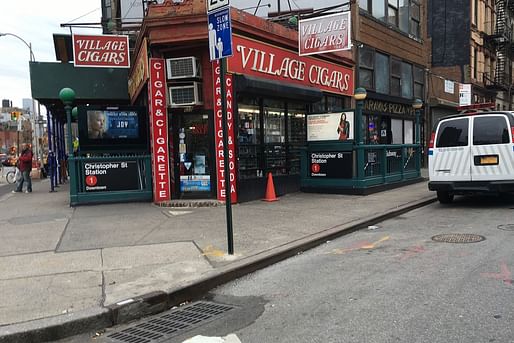

"Property of the Hess Estate Which Has Never Been Dedicated For Public Purposes", reads a small mosaic in Manhattan's West Village. A peculiar sight, artist Chaz Hutton recently recounted in a fascinating twitter thread how this small piece of New York Real Estate, also known as the Triangle of Spite, came to be.
In the 19th century, as the city was growing—and expanding with landfill—a commission was put together to create a grid for future development. Called “The 1811 Commissioners plan”, the blueprints drawn up laid the city out into a series of rectangular blocks. As the grid was built out, undergoing alterations such as the addition of Central Park, the Commissioners Plan began running up against the older grids of the city going in different directions. The result was a number of little triangular blocks.
On one of these awkward intersections sat the Voorhis building, owned by a man named David Hess. Eventually, when the city decided to extend the subway, they seized his plot of land leaving, however, a tiny triangle that remained in the possession of his family. Despite efforts on the part of the city to gain control of the remaining piece of land, the Hess Family refused to donate. Instead, the family decided to install the mosaic, a spiteful reminder to the city of their ownership.
1 Comment
That's just awesome...reminds me of the locals here in Old Amsterdam :)
Block this user
Are you sure you want to block this user and hide all related comments throughout the site?
Archinect
This is your first comment on Archinect. Your comment will be visible once approved.